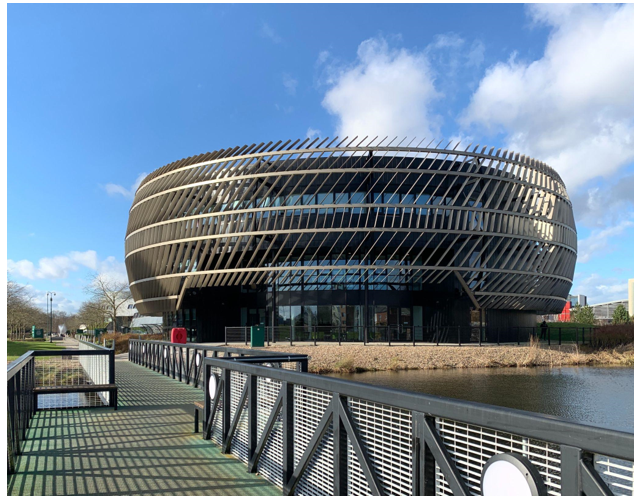- London’s Gross Value Added (GVA) shrank 3.6% between 2019 and 2021, while UK GVA fell 3% – but London’s GVA is forecast to grow 3.1% per year between 2021 and 2025 compared UK annual growth of 2.8%.
- The East Midlands and South West are expected to be the only regions to have gained ground on London by 2025 compared to 2019 – and only four UK regions will see their working age populations grow by 2025.
- Eight out of nine English regions are expected to have returned to their pre-pandemic levels of output by the end of 2022.
- Net Zero and a focus on the quality of life are key to the UK’s levelling up ambitions, report says.
The COVID-19 pandemic has helped to narrow the UK’s regional economic divide, but the gap between London and the rest of the country is set to grow again during the post-pandemic recovery, according to EY’s latest
Regional Economic Forecast. The report sets out the scale of the task needed to level up the UK economy.
When measured by Gross Value Added (GVA), London’s economic activity dipped 3.6% from 2019 to 2021, compared to a slightly smaller 3% average decline for all UK regions. But, between 2021 and 2025, London’s GVA is forecast to grow by 3.1% per year compared to annual average growth of 2.8% across the UK. Only the East Midlands and South West are currently expected to gain any ground on London over the next three years compared to their pre-pandemic performance – although the capital is on course to pull ahead again after 2025.
London’s forecasted dominance is even more apparent in the labour market, with the capital one of just four UK regions (out of 12) expected to see their working age population grow – by 4.7% – between 2021 and 2025. The North East, by contrast, is expected to see its working age population shrink by 2% over the same period. London is predicted to regain or exceed its pre-pandemic share of UK employment (30.9%) and GVA (39.1%) in 2025 too.
The report also forecasts that the economic gap between cities and towns will continue to widen, with England’s major cities expected to grow 2.9% per year by 2025, compared to forecast growth of 2.6% in towns.
Rohan Malik, EY’s UK&I Managing Partner Markets & Accounts, says: “The structural forces driving UK regional economic inequality are deep-rooted and are unlikely to be reversed overnight. Long-term ambitions and sustained, coordinated action are needed to balance growth across the country while ensuring that ‘levelling up’ isn’t simply moving activity elsewhere at London’s expense. The right actions now will bear fruit eventually, but policymakers need to be in this for the long haul.
“Greater flexibility on where people work, aided by the pandemic, could help things. Focusing on what attracts people and businesses to a region, attracting the right mix of sectors and job opportunities, and tackling issues that affect quality of life will be key to taking advantage of this. Retaining young, aspirational talent matters: Manchester, for example, has one of the highest graduate retention rates of all UK cities – and it’s expected to be the UK’s fastest growing city between 2022 and 2025.
“As previous EY research has shown, the UK’s Net Zero and levelling up ambitions go hand-in-hand: the billions of pounds of investment required to reach Net Zero present a golden opportunity to transform not only the environmental sustainability of the UK economy, but its regional balance too. The manufacturing and utilities sectors, for example, are key to the Net Zero agenda – and they are vital to regional economies.”
East Midlands forecast to thrive, but the West Midlands and North West recoveries will be slower
All English regions are expected to have regained their pre-pandemic level of GVA by the end of 2023, with only the West Midlands still below its pre-pandemic size by the end of 2022. Around twenty per cent of areas in England recovered to their pre-pandemic GVA levels by the end of 2021 – the fastest to do so being digital and science-friendly Reading (where GVA is already 4% above its 2019 level); manufacturing-reliant Solihull (where GVA is still 9% below its 2019 level) is farthest from its 2019 performance.
Relative to their pre-pandemic GVA levels, the East Midlands (up 9.5%), the South West (9%) and London (8.9%) are expected to grow the most by 2025. By contrast, the West Midlands (up 5.3%), North West (6.8%), and North East (7.9%) are expected to grow at the slowest pace.
According to EY’s analysis, the West Midlands, North West and London economies were the most affected by the initial impact of the pandemic, with 2021 seeing the West Midlands economy recover to just 94.5% of its 2019 size, the North West’s economy reaching 96.1% of its 2019 size, and London recovering to 96.4%. By contrast, the Yorkshire and the Humber economy had reached 98.8% of its pre-pandemic size by the end of 2021, while the North East was at 98.5%.
Despite the North West’s relatively slow recovery by 2025, Manchester is expected to be the fastest growing of England’s major cities between 2022 and 2025, with annual growth of 3.2% supported by gains in science and professional and administrative services.
Peter Arnold, EY’s UK Chief Economist, says: “The differences in regional performance are largely driven by sector specialisms. Regions reliant on the public sector and healthcare, such as the North East, have fared better during the pandemic. In contrast, regions that are more reliant on hospitality and city centre activity, like London, or on manufacturing businesses connected to global supply chains, like the West Midlands and its automotive sector, were more affected.
“These sector mixes will dictate the longer-term recovery too. The North East’s public sector helped the region’s economy weather the pandemic but may mean slower post-pandemic growth. Conversely,
city-friendly sectors like digital, science and technology, and services will eventually bounce back, taking places like London and Manchester with them after a slow start.
“The pandemic’s economic impact will be good news for regions with the right mix of sectors. The East Midlands, for example, has long been a professional services, science and transport hub – and the region’s laboratories and vast delivery and fulfilment centres have become all the more important over the course of the pandemic.”
In a sign of the impact of the pandemic-driven acceleration of changes in the way consumers shop, Lichfield, despite its West Midlands location, is forecast to be England’s best-performing town between 2022 and 2025. From 2023, the town will be home to a new global fulfilment centre for an online retailer and is expected to see its GVA grow 3.6% per year.
Across the UK, service and city centre activities are expected to be the fastest growing between 2022 and 2025, with accommodation and food service expected to improve its GVA by 8.6% per year, followed by other services (up 6.7%), administrative and support services (up 5.5%), and arts and entertainment (up 5.4%). The transportation and storage sector is expected to grow 3.8% per year. By contrast, manufacturing is one of the sectors expected to undershoot the overall annual UK GVA growth (2.8%), with 1.7% growth forecast.












